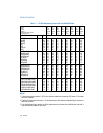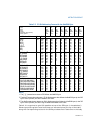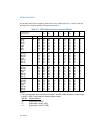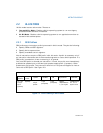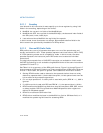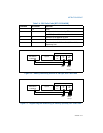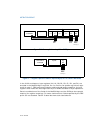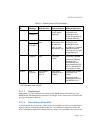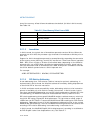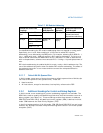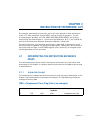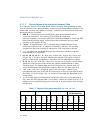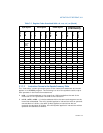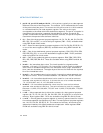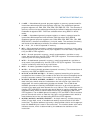
2-14 Vol. 2A
INSTRUCTION FORMAT
size of the memory offset follows the address-size default (64 bits in 64-bit mode).
See Table 2-6.
2.2.1.5 Immediates
In 64-bit mode, the typical size of immediate operands remains 32 bits. When the
operand size is 64 bits, the processor sign-extends all immediates to 64 bits prior to
their use.
Support for 64-bit immediate operands is accomplished by expanding the semantics
of the existing move (MOV reg, imm16/32) instructions. These instructions (opcodes
B8H – BFH) move 16-bits or 32-bits of immediate data (depending on the effective
operand size) into a GPR. When the effective operand size is 64 bits, these instruc-
tions can be used to load an immediate into a GPR. A REX prefix is needed to override
the 32-bit default operand size to a 64-bit operand size.
For example:
48 B8 8877665544332211 MOV RAX,1122334455667788H
2.2.1.6 RIP-Relative Addressing
A new addressing form, RIP-relative (relative instruction-pointer) addressing, is
implemented in 64-bit mode. An effective address is formed by adding displacement
to the 64-bit RIP of the next instruction.
In IA-32 architecture and compatibility mode, addressing relative to the instruction
pointer is available only with control-transfer instructions. In 64-bit mode, instruc-
tions that use ModR/M addressing can use RIP-relative addressing. Without RIP-rela-
tive addressing, all ModR/M instruction modes address memory relative to zero.
RIP-relative addressing allows specific ModR/M modes to address memory relative to
the 64-bit RIP using a signed 32-bit displacement. This provides an offset range of
±2GB from the RIP. Table 2-7 shows the ModR/M and SIB encodings for RIP-relative
addressing. Redundant forms of 32-bit displacement-addressing exist in the current
ModR/M and SIB encodings. There is one ModR/M encoding and there are several SIB
encodings. RIP-relative addressing is encoded using a redundant form.
In 64-bit mode, the ModR/M Disp32 (32-bit displacement) encoding is re-defined to
be RIP+Disp32 rather than displacement-only. See Table 2-7.
Table 2-6. Direct Memory Offset Form of MOV
Opcode Instruction
A0 MOV AL, moffset
A1 MOV EAX, moffset
A2 MOV moffset, AL
A3 MOV moffset, EAX



